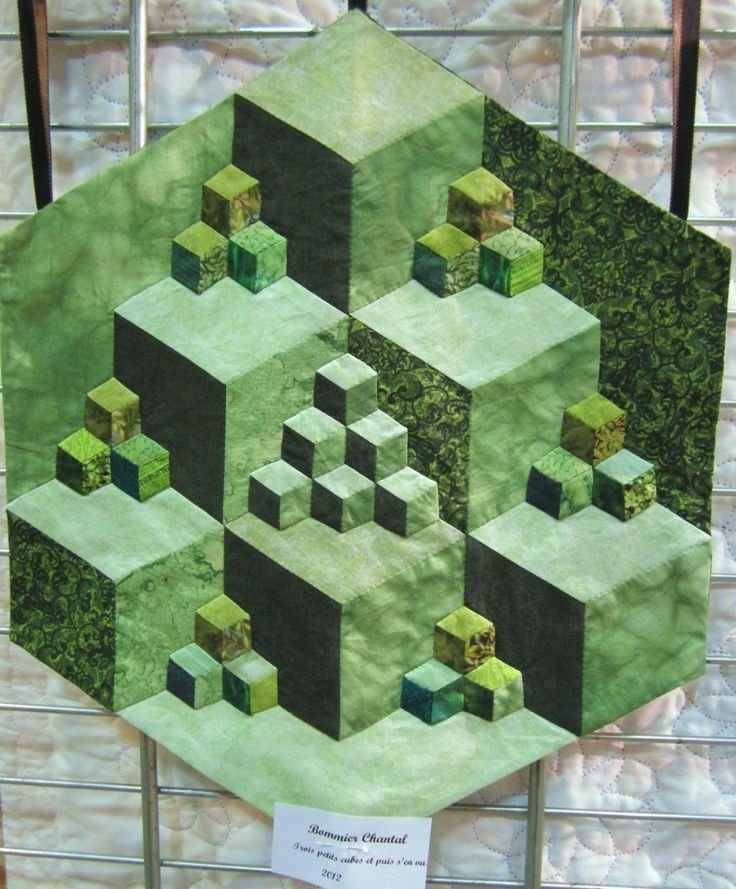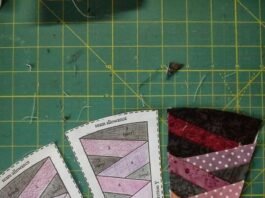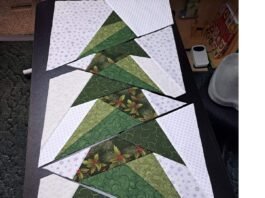The Patchwork 3D – Easy Tutorial is a captivating and beginner-friendly quilting guide that brings your fabric creations to life with added dimension and visual interest. Unlike traditional flat patchwork, 3D patchwork uses folding, layering, or padded techniques to give texture and movement to each block—resulting in a quilt that pops with personality.
If you’ve ever wanted to try something a little more exciting than basic piecing, this is the perfect next step. The Patchwork 3D – Easy Tutorial uses simple shapes—often squares or triangles—and transforms them with clever fabric placement and stitching techniques. Best of all, it’s suitable for all levels, so whether you’re a curious beginner or an experienced quilter looking for something new, this tutorial will spark your creativity.
In this guide, you’ll learn what makes 3D patchwork unique, how to prepare and assemble your blocks, what materials you’ll need, and how to make the most out of this beautiful quilting technique.

1. What Makes the Patchwork 3D Technique So Special
The Patchwork 3D – Easy Tutorial stands out because it adds depth and motion to a traditional quilt layout. Instead of a completely flat surface, 3D elements rise or fold from the base fabric—catching light and shadow in different ways.
SEE OTHER FACE PATTERNS HERE!
One of the most common 3D techniques is the folded triangle or prairie point, which gives the impression of petals or layered scales. When repeated across a quilt top, this creates a mesmerizing, tactile design.
Another 3D style includes stuffed or puffed elements. These are small fabric squares slightly filled with batting and stitched in such a way that they bulge outward, adding cushion and charm.
There’s also dimensional appliqué, where petals, leaves, or other shapes are sewn onto the top of the block with only part of the piece secured—allowing the rest to lift and move freely.
These techniques make your quilt more dynamic. They can be used to create flower petals that “bloom,” fluttering butterflies, or geometric illusions that trick the eye.
The extra dimension doesn’t just look great—it also invites touch. Quilts with 3D elements are especially loved by children and tactile learners.
Overall, 3D patchwork gives you creative freedom to break from the norm and explore new textures and layouts.
2. What You’ll Need to Get Started with Patchwork 3D
To follow the Patchwork 3D – Easy Tutorial, you won’t need any complicated or expensive materials. Most of what you need is already part of a standard quilting toolkit.
Start with 100% cotton quilting fabric in a few contrasting or coordinating prints. Solids work beautifully for letting the 3D elements shine, while small florals or batiks add visual interest.
A rotary cutter, self-healing mat, and quilting ruler will help you cut accurate squares and triangles—the foundation for most 3D blocks.
You’ll also need basic sewing supplies: a sewing machine, neutral thread, scissors, pins or clips, and a hot iron.
For stuffed elements, like puff blocks or trapunto-style quilting, you’ll want lightweight batting or polyfill. A little goes a long way.
Starch or spray sizing is optional but helpful. It adds crispness to your fabric, making folded shapes like prairie points easier to handle and more defined.
You may also want a fabric marker or chalk pencil to mark fold lines and alignment points during construction.
Finally, prepare a quilting needle and walking foot if you plan to quilt through thick or padded layers.
3. How to Make a Simple 3D Patchwork Block – Step by Step
The most approachable version of 3D patchwork is the folded triangle block, which can be arranged in countless creative ways. Here’s how to make a basic version using the Patchwork 3D – Easy Tutorial method.
Start by cutting (4) 5-inch squares of your base fabric, and (4) 5-inch squares of your feature fabric.
Take one feature square, fold it in half diagonally (right sides facing out) to create a triangle. Press with an iron to form a sharp crease.
Repeat this for the other three feature squares so you have four folded triangles.
Place one base square right side up. Lay a folded triangle on top, lining up the raw edges with the sides of the square. The folded edge should point toward the center.
Repeat with the other folded triangles, placing one on each side of the base square and overlapping the corners slightly. This creates a pinwheel or layered flower effect.
Baste around the edges using a long stitch on your machine or hand-stitch to hold everything in place.
Now, treat this layered square like a regular quilt block—sew it together with other squares in rows, then join the rows.
Once the quilt top is assembled, you can choose to quilt around the folded edges to enhance the 3D look or leave them free for more movement.
This simple folding technique can be adapted endlessly. Try tucking a small piece of lace or contrast fabric under the fold for a surprise pop of texture.
4. Creative Ideas for Your Patchwork 3D Projects
One of the most exciting aspects of the Patchwork 3D – Easy Tutorial is how flexible the technique is across projects. You’re not limited to quilts—this block style can be adapted into many creative uses.
Use folded triangle blocks to make a stunning table runner. The 3D petals catch the light and give a dynamic, elegant look perfect for special occasions.
Create a baby quilt with soft puffed squares. The 3D elements will be touchable and comforting for little ones.
Sew a wall hanging with dimensional flowers, butterflies, or leaves. Use bold prints and vibrant colors to make them stand out as modern textile art.
Turn 3D patchwork into practical home décor like pillows or tote bags. A small square with dimensional elements can add a playful and artistic accent to any item.
Experiment with ombré or gradient fabrics to create a rainbow of folded elements across your quilt top.
Add beads or hand embroidery to the lifted edges of your folded blocks for a textured, embellished finish.
By changing fabric choices and placement, you can go from soft and romantic to bold and geometric—making this technique a true reflection of your style.
🌟Join our exclusive Quilt broadcast list on Messenger! Receive the best patterns, tips, and updates directly in your inbox. Our team is ready to send you delightful content that will inspire your projects. Don’t miss this opportunity to stay updated and create amazing pieces. Join now and be part of this passionate quilt community!✨📩
FAQ – Patchwork 3D – Easy Tutorial
Is 3D patchwork hard for beginners?
Not at all! Many 3D techniques like prairie points or folded triangles are easy to learn and perfect for beginners. The key is precision in folding and pressing.
Do 3D quilt blocks require special fabric?
No, you can use standard quilting cotton. Just avoid very stiff or slippery fabrics. Cotton holds folds well and is easy to sew.
How do I quilt a top with 3D elements?
You can quilt around the dimensional pieces or carefully stitch over the folds to hold them down. Use a walking foot for thick areas.
Can I wash a quilt with 3D pieces?
Yes, but it’s best to wash gently and lay flat to dry. Delicate elements may fold or wrinkle in the wash, so avoid high heat or rough cycles.
What’s the best size for 3D elements?
Start with 5-inch squares for folded pieces—they’re easy to handle. As you gain confidence, you can scale up or down as needed.
Can I combine 3D blocks with regular flat blocks?
Absolutely! Mixing 3D and traditional blocks adds texture and variety to your quilt layout and makes the design more dynamic.
Conclusion
The Patchwork 3D – Easy Tutorial opens the door to a world of creative quilting that’s as fun to make as it is to admire. With just a few folds and layers, you can turn a simple quilt block into a show-stopping piece filled with depth and texture.
Whether you’re making a full quilt, a wall hanging, or an accent pillow, this technique will elevate your fabric work and leave a lasting impression. Best of all, it’s accessible to anyone with a sewing machine, some cotton fabric, and a little imagination.
If you try this 3D patchwork method, we’d love to hear from you! Leave a sincere comment with your thoughts, suggestions, or your own creative twist on the pattern. Happy quilting! 🧵✨




